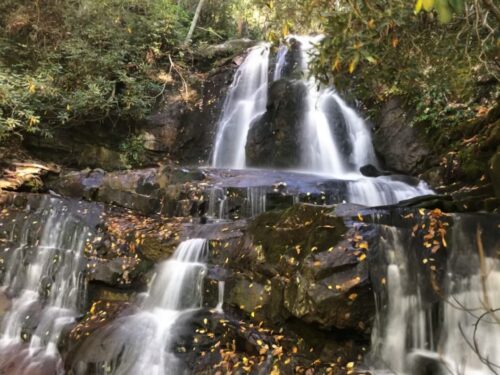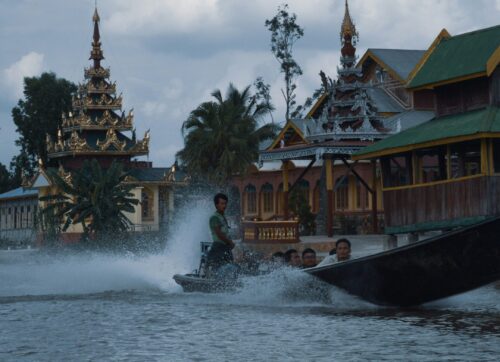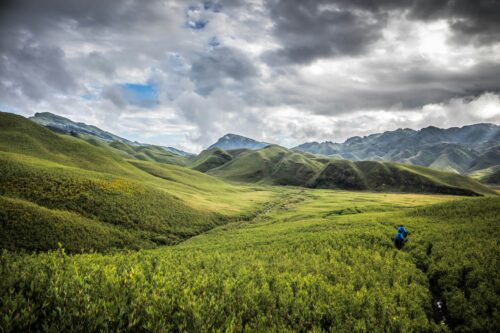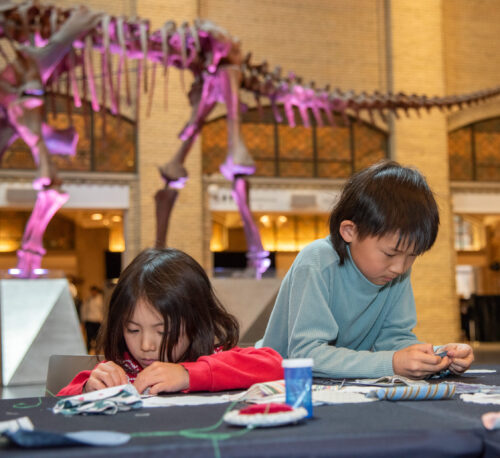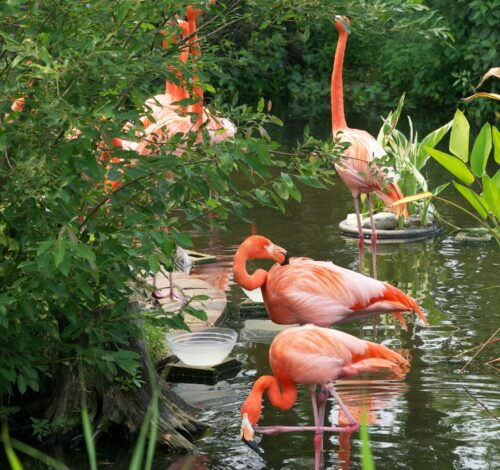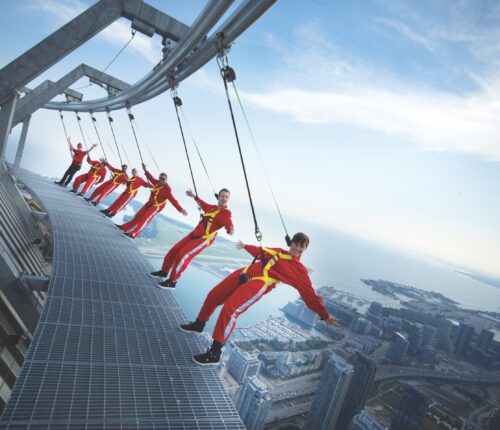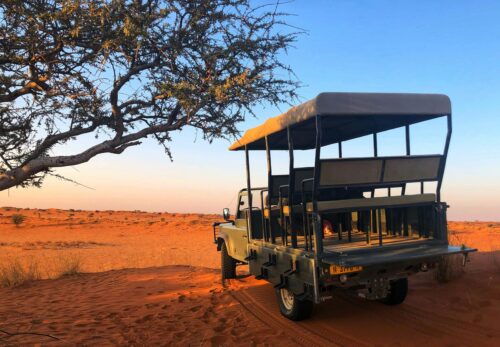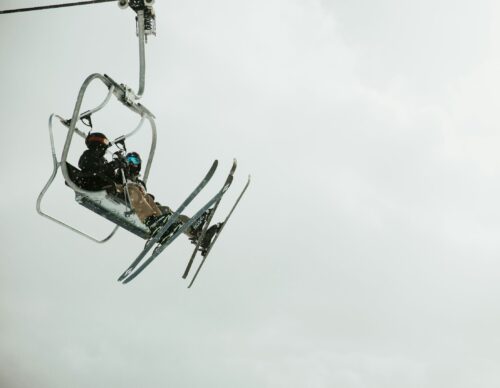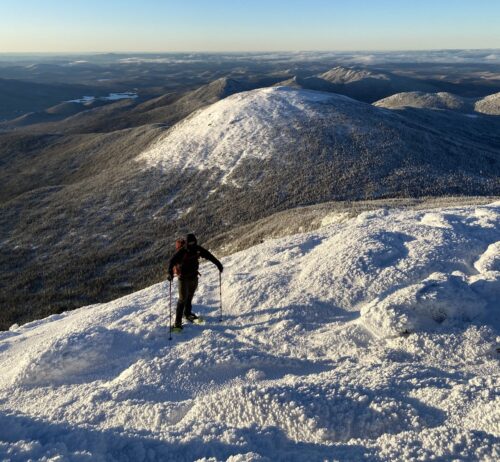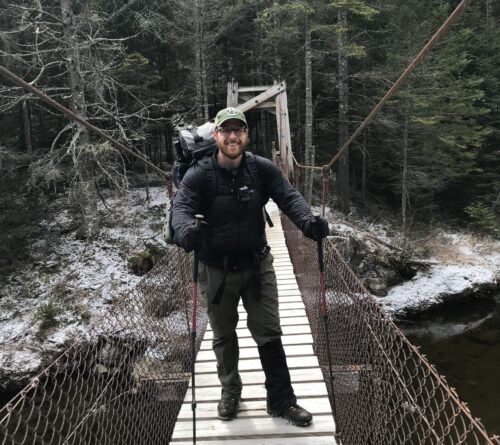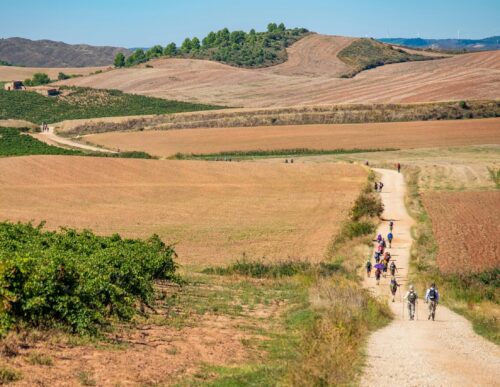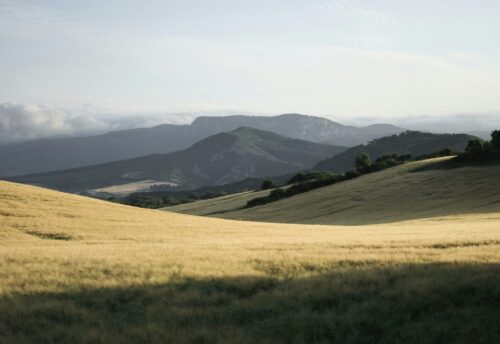72 Hours in Pigeon Forge: Tips for The Perfect Long Weekend 9 Apr 3:19 PM (10 hours ago)
You don’t have to wait for summer vacation or the winter holidays to take a break. Sometimes, all you need is a long weekend to hit reset. If you’re craving a quick escape that blends relaxation, adventure, and entertainment, Pigeon Forge, Tennessee, might be exactly what you’re looking for.
This charming town offers something for everyone — whether you’re traveling with your partner, making memories with the kids, or heading out on a solo adventure. And with just 72 hours, you’d be surprised at how much you can see, do, and enjoy. This guide breaks down how to make the most of your weekend in Pigeon Forge, from where to stay to what not to miss.
Let’s dive in!
1. Come Prepared
A long weekend flies by, so it helps to be ready before you even hit the road. Pack light but smart: comfortable shoes, a weather-ready jacket, and clothes you can mix and match will make your weekend much easier. Pigeon Forge weather can be unpredictable, especially if you’re heading into the mountains, so layers are your best friend. Bring a day bag or backpack you can carry while exploring, and don’t forget phone chargers, sunscreen, and a reusable water bottle.
Once you arrive, resist the urge to dive straight into a packed schedule. Start your trip with something light, like a scenic drive through town or a casual meal at a local diner. It gives you time to settle in and shift into weekend mode.
2. Where to Stay: Comfort, Views, and More
Even though you’ll be out and about most of the time, where you stay can shape the way you feel at the end of each day. Book your stay in one of the top rated hotels in Pigeon Forge, like The Inn on the River. It’s not just about a comfortable bed, though they do offer cozy rooms and suites with plush bedding.
What makes this hotel unique is its location right on the river, with balconies that let you soak in peaceful views. Families will love the heated indoor pool and the outdoor pool with a kids’ splash area, while couples may enjoy unwinding by the fire pit in the evenings. There’s also a full hot breakfast each morning! It’s the kind of place where you can recharge without feeling disconnected from the excitement of the town.
3. Friday Night Fun: Ease In with Dinner and a Show
Once you’ve had some time to settle in, head out for a classic Pigeon Forge experience: dinner and a show.
One of the best parts about this town is how entertainment and dining often come together in a single outing. Dolly Parton’s Stampede offers a high-energy show with horses, music, and a four-course meal that’s hard to beat. If you prefer comedy and Southern-style cooking, the Hatfield & McCoy Dinner Feud is another crowd favorite. These shows are great for families, couples, or even solo travelers looking to experience something different and genuinely fun.
4. Saturday Morning: Smoky Mountain Exploration
Start your Saturday by heading into the Great Smoky Mountains National Park. It gives you the perfect chance to get outdoors and breathe in some mountain air. If you’re up for a scenic drive, Cades Cove offers wildlife sightings and sweeping views of the mountains. For a manageable hike with a big payoff, the Sugarlands Valley Nature Trail is a popular choice.
Being in nature gives you a different energy than the town — more peaceful, slower, and grounding.
5. Saturday Afternoon: Attractions, Rides, and Views
After your morning in the mountains, head back into town for some lighthearted fun. The Island in Pigeon Forge is a must-visit spot, with attractions, restaurants, shops, and live entertainment all in one place. Take a ride on the Great Smoky Mountain Wheel for panoramic views, or just stroll the area with a drink or snack in hand. There are plenty of places to sit and relax. If you’re traveling with kids, you might spend a little more time at arcades or spots like MagiQuest.
Either way, the afternoon is your chance to enjoy the buzz of Pigeon Forge and maybe discover a few surprises along the way.
6. Foodie Breaks: Where to Eat Between Adventures
Great food isn’t just a bonus in Pigeon Forge — it’s part of the experience. Whether you’re looking for a hearty breakfast, a casual lunch, or a sit-down dinner, the town has plenty to offer. You could start your morning at Sawyer’s Farmhouse. It’s a local favorite with generous portions and a down-home atmosphere. Their pancakes, waffles, and biscuits are made fresh and served fast, so you’ll be fueled up and ready to go.
For lunch, Local Goat is a solid pick. The name may be quirky, but the food is seriously good. Known for its gourmet burgers, craft beer, and scratch-made entrees, it’s one of those places where everything on the menu sounds tempting. It gets busy on weekends, so it’s worth planning ahead or checking wait times online.
If you’re in the mood for something sweet after, head to Mad Dog’s Creamery for ice cream, funnel cakes, or donuts. It’s casual, fun, and always hits the spot.
7. Sunday Morning: Relaxation with a View
After two active days, Sunday morning should feel a little slower. This is your chance to wind down and enjoy the quieter side of Pigeon Forge. Grab a coffee and light breakfast — either at your hotel or from a local café — and head to Parrot Mountain and Gardens.
This tucked-away attraction offers a peaceful escape surrounded by beautifully maintained gardens, tropical birds, and shady walkways. It’s different from the high-energy attractions in town and perfect if you’re looking for a moment of calm. You can walk at your own pace, take photos, and even feed some of the birds. The setting is ideal for couples or families who want a low-key way to spend their last morning.
8. Making It Home Without the Stress
As your weekend winds down, try to leave with some breathing room in your schedule. Many people head home Sunday afternoon or evening, which can lead to traffic or long lines at nearby airports. If possible, leave before peak travel hours or grab an early dinner in town to let the crowds thin out.
For one last breath of mountain air, take a quick walk by the river or stop for a final photo with the Smokies in the background. Ending your trip on a relaxed note helps you hold onto that vacation energy just a little longer, even after you’re back home.
Final Thoughts
A long weekend in Pigeon Forge is more than enough time to explore, unwind, and make lasting memories. With scenic drives, family-friendly attractions, great food, and peaceful corners tucked between all the action, it’s a destination that fits a variety of travel styles. Whether you came for the views, the shows, or simply a change of pace, chances are you’ll be planning your next visit before you even leave.
The post 72 Hours in Pigeon Forge: Tips for The Perfect Long Weekend appeared first on Road Trips For Families.
Finding the Perfect Retreat for Your Smoky Mountains Adventure 9 Apr 3:10 PM (10 hours ago)
Planning a mountain trip is exciting, but where you stay can make or break the experience. You’ll want a place that feels relaxing, fits your needs, and adds to your vacation’s enjoyment — not stress. Choosing the right retreat doesn’t have to be hard, but it takes some thought.
If you’re heading to the Smoky Mountains, Gatlinburg is one of the best places to set up base. It has easy access to the national park, great restaurants, fun attractions, and scenic walking trails. Whether you’re into hiking, dining, shopping, or just relaxing, Gatlinburg gives you the full package. It’s a town that blends charm, nature, and convenience — all in one spot.
This article serves as your guide to booking the perfect retreat for your next adventure in the Smokies.
Understand Your Travel Style and Preferences
Before choosing where to stay, take a moment to think about your ideal trip. Are you planning to relax, go hiking, explore local spots, or enjoy family-friendly fun? Maybe you’re looking for something romantic or quiet. Everyone’s idea of a good trip is different, so matching your lodging to your plans and preferences is important. Whether you want easy access to attractions or a peaceful escape, knowing your travel style will help you find the right place and make your entire experience more enjoyable and stress free.
Prioritize Comfort
A restful night is important when you’re away from home. Clean rooms, good service, and useful amenities can make a big difference in your trip. Look for places that offer comfort and easy access to nearby activities so you can relax and enjoy your time. When searching for hotels in Gatlinburg TN, look for accommodations that offer cozy rooms, private balconies, and a peaceful setting. Hotels like the Bearskin Lodge, which are close to shops, restaurants, and trails, make the best choices.
Choose Lodging Based on Your Itinerary
Your daily plans should guide where you stay. If you’re heading out early for hikes, a place near the park entrance is convenient. For trips focused on dining, shopping, or entertainment, a downtown location may work better. The goal is to cut down on travel time between activities so you can enjoy more and stress less. Think about where you’ll spend most of your day and choose lodging that makes it easier to get there. A smart location can make your trip smoother and more enjoyable from start to finish.
Consider Seasonal Factors When Booking
When planning your trip, think about how the time of year will affect your experience. Summer tends to be the most crowded, with higher prices and lots of visitors. Spring and fall offer pleasant temperatures and colorful scenery, making them ideal for sightseeing and outdoor activities. Winter is much quieter, often with lower rates and fewer crowds, perfect for a peaceful retreat. Seasonal changes can also affect availability, event schedules, and even local traffic. Doing a bit of research ahead of time can help you choose the best season that fits your preferences and travel budget.
Look for Amenities That Add Value
Small extras can make your stay more enjoyable. Free breakfast, a pool, a private balcony, or a fireplace can improve your trip without much extra cost. These added comforts give you more for your money and make your stay feel special. Choose a place that offers more than just a bed.
Read Reviews from Real Travelers
One of the easiest ways to learn about a Smoky Mountains stay is by reading what past guests have said. Reviews often give honest insight into what you can expect. Look for feedback on cleanliness, noise levels, staff service, and room conditions. Try to focus on patterns — if several people praise or complain about the same thing, it’s likely accurate. These details can help you avoid surprises and pick a place that fits your expectations.
Think About Room Types and Group Needs
Whether you’re traveling solo, with a partner, or with a large group, the type of room matters. Some travelers may prefer a king bed and a balcony, while others need bunk beds for kids or extra space to spread out. Also, think about the layout — do you need a suite, or is one room enough? Planning this ahead of time helps ensure everyone is comfortable, especially during longer stays.
Explore the Surrounding Area Before You Book
It’s not just about the room; it’s also about what’s nearby. Check if your lodging is within walking distance of restaurants, trails, or attractions. Being close to what you want to do saves time and energy during your trip. Some locations also offer great views or peaceful surroundings that relax your stay. Take a quick look at a map or the hotel’s photo gallery to better understand what’s around.
Set a Budget Without Sacrificing Experience
Everyone wants to get the best value for their money. Set a clear budget for lodging, but also think about what’s worth paying a little more for. Sometimes, spending slightly more gets you better service, nicer rooms, or a better location. Compare several places and check for special offers or discounts. Booking early or during the off-season can also help you stay within budget while still enjoying a quality experience.
Book With Flexibility and Peace of Mind
Even the best plans can change, so choosing a place that offers flexible booking is smart. Look for cancellation policies that allow changes or refunds. This is especially helpful for family trips or group travel where unexpected things can happen. Knowing that you can adjust your stay if needed gives you peace of mind and helps you feel more relaxed while planning your trip.
Your Smoky Mountains lodging choice greatly influences how much you enjoy your mountain adventure. A good place to stay offers comfort, convenience, and the right fit for your needs. You can find the perfect spot to relax after a day of exploring by thinking through your preferences, schedule, and budget. Planning ahead ensures that when you arrive, all you have to do is settle in and enjoy every moment of your trip.
The post Finding the Perfect Retreat for Your Smoky Mountains Adventure appeared first on Road Trips For Families.
Why Murphy, NC, is the Dream Destination for Rest, Recharge, and Reconnection 9 Apr 2:59 PM (11 hours ago)
Everyone reaches a point when the hustle of daily life becomes overwhelming — where the heart yearns for calm and the mind craves silence. In those moments, the ideal remedy isn’t in productivity hacks or social media detoxes but in physically removing oneself from the noise.
That’s where Murphy, NC, comes into the picture. Tucked away in the scenic beauty of the Appalachian Mountains, this small town offers something deeply rare: a genuine escape from the chaos and the space to find yourself again.
Whether you’re a couple seeking rekindled connection, a solo traveler needing solitude, or a family, Murphy extends a quiet invitation to rest, recharge, and reconnect.
Comfort, Views, and Solitude: The Cabin Experience
One of the most rejuvenating ways to experience Murphy is by booking a stay in one of the area’s mountain cabins. The rustic charm paired with modern comfort is a powerful combination that delivers the best of both worlds. When it comes to quality accommodations, Mountain Country Cabin Rentals stand out for their thoughtful approach to guest experience.
These cabins are more than just places to sleep — they’re sanctuaries designed to calm the senses. You can wake up to panoramic mountain views or the tranquil shimmer of a nearby lake. Many cabins come equipped with a private hot tub, letting you soak your worries away under a canopy of stars. Fire pits offer the perfect setting for storytelling and marshmallow roasting, creating moments of connection that city life often steals away. Some properties even feature game rooms with pool tables, ensuring there’s fun to be had indoors as well.
For those who travel with furry companions, several pet-friendly options make sure that your four-legged friends are just as welcome. These mountain cabins in NC provide the ideal blend of natural immersion and modern convenience, helping travelers decompress in comfort.
Outdoor Adventures that Awaken the Soul
Once you’ve settled into your cabin and soaked in the serenity, Murphy offers a world of nature-driven experiences that inspire both calm and exhilaration. Hiking trails meander through ancient forests, offering varying levels of challenge for casual walkers and seasoned trekkers alike. Every trail rewards you with views that linger in your mind long after your return.
For those who find peace on the water, there are ample kayaking and paddleboarding opportunities. The gentle currents and glassy lakes reflect skies that seem to stretch forever. You’ll find it’s less about the sport and more about the rhythm — a soothing back-and-forth that clears mental clutter.
Fishing is a beloved pastime here, too — not for competition or show but for the meditative stillness it brings. The act of casting a line in quiet anticipation teaches patience in a way that few other activities can.
Reconnecting With Loved Ones Without Distractions
In a world driven by screens and notifications, Murphy offers something revolutionary: a chance to focus on each other. Families that arrive distracted often leave realigned. Couples re-learn the language of subtle affection in the hush of the woods. Friends share conversations they hadn’t realized they were missing.
The slower pace of life in Murphy gently encourages this reconnection. Mealtimes are leisurely, filled with conversation instead of phones. Walks become opportunities for meaningful talk rather than rushed exercise. Evenings are best spent watching the sunset or staring into the embers of a fire rather than scrolling through social feeds.
It’s in these moments — small and quiet — that the real magic happens. Bonds deepen, laughter comes easier, and the rush of life finally makes space for reflection.
Nature as a Catalyst for Inner Calm
One of the most transformative aspects of visiting Murphy is the almost immediate change in mindset that the natural surroundings inspire. There’s something about standing beneath towering trees or listening to the gentle rustle of leaves that softens even the most rigid stress. Time slows, and with it, your thoughts begin to unwind.
Many visitors find themselves taking walks just for the sake of being outside. There’s no destination in mind, only the pleasure of moving through clean air under a sky untainted by city glare. For those who meditate or journal, the surroundings amplify the impact. Quiet spots abound, where you can sit for hours uninterrupted, allowing space for clarity to return.
Even those who don’t usually describe themselves as “outdoorsy” discover an unexpected comfort in nature’s embrace. Whether it’s the aroma of pine after a light rain or the sight of deer grazing at dawn, the smallest details begin to matter — and that shift in attention is often the first step toward inner peace.
A Place That Leaves a Lasting Impact
What truly sets Murphy apart from other destinations is how deeply it stays with you. It’s not just the beauty of the mountains or the quiet charm of its accommodations; it’s the way it makes you feel. Visitors often leave with more than just souvenirs. They leave with lighter hearts, clearer minds, and memories that pull them back whenever life starts to feel heavy again.
This isn’t a destination that shouts for attention. It doesn’t need to. Murphy whispers to your spirit, reminding you of simpler times and the essential joy of being present. In doing so, it becomes a part of you — a mental postcard you return to again and again.
And perhaps that’s the greatest gift it offers: not just a temporary escape, but a lasting change in perspective.
In a time when true rest feels like a luxury and genuine connection is increasingly rare, finding a place that offers both is invaluable. Murphy quietly delivers on both fronts. It allows space for stillness and gives people the chance to rediscover what truly matters, without the noise, the rush, or the pressure of modern life.
Whether it’s the comfort of a cabin retreat, the embrace of the outdoors, or the simple joy of unhurried time with loved ones, Murphy offers the perfect backdrop for healing and growth. It reminds us that rest isn’t indulgent—it’s essential. That reconnection isn’t a goal — it’s a return.
And in that return, we find ourselves again.
The post Why Murphy, NC, is the Dream Destination for Rest, Recharge, and Reconnection appeared first on Road Trips For Families.
Thailand to India via Myanmar: A Road Trip Guide 9 Apr 2:28 PM (11 hours ago)
Picture driving through golden pagodas, busy border towns, mountain roads veiled in mist, and isolated tribal villages — all on one overland adventure from Southeast Asia to South Asia. A road trip from Thailand to India via Myanmar is the stuff of legends. What used to be the preserve of seasoned backpackers and fearless bikers is now slowly opening up to everyone — even families wanting a once-in-a-lifetime experience.
With the Trilateral Highway project, a huge road network linking Thailand, Myanmar, and India, tourists can now drive across three nations and thousands of cultures on this standout trip. And yes, it is possible to do so with kids in tow, provided the proper planning, paperwork, and attitude of inquiry.
Beginning in Thailand: Bangkok and Beyond
Your journey will most probably begin in Bangkok, a cosmopolitan city that wonderfully fuses old temples with modern style. It’s also a very accessible centre for air and road transport. If you’re spending time in Thailand prior to traveling north, a side trip from Bangkok to Krabi by VIP bus is an excellent way to unwind, enjoy the tropical beach atmosphere, and acclimate younger travelers to road trip life before the more remote sections start.
When you’re ready to drive towards India, look to Mae Sot, a border town in northwestern Thailand. This is where the real adventure starts — driving into Myawaddy, Myanmar.
Travel Documents and Permits
Before you even turn on the ignition, let’s get the paperwork sorted.
Passport
Your passport must be valid for more than six months after your planned travel dates.
Visa Requirements
- Thailand: Most nationals receive a visa-free stay or visa on arrival.
- Myanmar: A Myanmar eVisa or special Border Pass is not enough to cross overland at Myawaddy. You require pre-approved permits for your vehicle and guided escort through Myanmar.
- India: Indian nationals naturally do not require a visa. Foreigners require an Indian visa, which they must obtain beforehand.
- Carnet de Passage: Necessary to transport your own vehicle across international borders.
Myanmar Guide and Permits
A tour operator based in Myanmar is required to guide you through the country. They will arrange your permits, accommodations, and police checkpoints.
The Myanmar Stretch
Upon arriving in Myawaddy, your convoy will embark on the journey across Myanmar, which takes about five to seven days. This stretch is as lovely as it is uniquely diverse.
Must-Visit Stops in Myanmar
- Hpa-An: Set among karsts of limestone, this relaxed town boasts serene monasteries, bat caves, and boat trips. Children adore the Saddan Cave, a giant cave with rows of Buddha statues.
- Yangon: Myanmar’s biggest city is a mix of colonial charm and spiritual tranquility. Come to Shwedagon Pagoda, where golden spires glint at sunset.
- Bagan: A historical wonderland of more than 2,000 ancient temples. A hot air balloon ride for sweeping views is a good idea — enchanting for both children and adults.
- Mandalay: The last big stop before continuing to India. You can visit the Royal Palace, teakwood monasteries, and local craftsman workshops.
Throughout this stretch, accommodation ranges from mid-range hotels to family guesthouses. The roads are in reasonably good condition, though long drives may be tiring for children. Plan ample breaks and keep snacks, entertainment, and emergency medicine handy.
Crossing into India: The Moreh-Tamu Border
From Mandalay, you’ll head toward the Tamu border, the official exit point into India. On the Indian side is Moreh, located in the northeastern state of Manipur.
After crossing over into India, the scenery once more changes — dense forests, colorful locals, and twisty hill roads greet you. Roads are largely paved, though potholes and narrow passes are the norm in some sections.
The Indian Route: Through the Northeast and Into the Heart
India’s northeast is a hidden gem, often overlooked but rich in culture, cuisine, and natural beauty. From Moreh, most travelers follow this route:
- Imphal: Capital of Manipur, known for its Loktak Lake and floating islands. Boating and lake picnics are a treat for families.
- Kohima: If your time allows, Nagaland’s Hornbill Festival is a colorful explosion of tribal dance, food, and culture. Children enjoy learning about India’s culture.
- Kaziranga National Park (Assam): A UNESCO World Heritage Site renowned for one-horned rhinos as well as elephant safaris. A great place to stop and stretch the drive as well as get up close and personal with nature.
- Guwahati: A convenient point for resting, taking flights, and sightseeing in cities such as the Kamakhya Temple or Brahmaputra river cruises.
- Your Final Destination: Depending on your itinerary, head towards Kolkata, Delhi, or Varanasi. From here, the whole Indian subcontinent is within your reach.
Family Travel Tips for the Road
This grand adventure is not limited to singles and biker groups. With proper attitude and planning, families can also excel on this road trip.
Here’s how:
- Travel in a Group: Join or start a group of similar families. Shared equipment, playmates for the children, and an inherent support group matter immensely.
- Pre-Book Accommodations: In the case of remote locations, booking a place in advance prevents that last-minute stress.
- Keep Kids Engaged: Audiobooks, travel journals, board games, or even scavenger hunts can make long drives enjoyable.
- Pack Smart but Light: Layers for variable climates, essential medications, snacks, and chargers are must-haves.
- Local Cuisine: Food in Southeast Asia is delicious and sometimes hot, but most places have mild alternatives. Rice, fruit, and eggs tend to be safe and child-friendly.
Final Thoughts
The road trip from Thailand to India via Myanmar is not only a trip — it’s an unfolding story through country, languages, and lives. While the journey demands preparation and patience, the payoff is enormous — especially when shared with family and friends.
From sandy beaches and bustling bazaars to sacred temples and remote hills, you’ll have a lifetime of stories etched into your hearts.
The post Thailand to India via Myanmar: A Road Trip Guide appeared first on Road Trips For Families.
6 Toronto Attractions to Visit on Your Next Family Road Trip 9 Apr 8:00 AM (18 hours ago)
—By Michele Sponagle—
Toronto is one of the most multicultural cities in the world, representing 200-plus ethnicities and 170 spoken languages. It’s not surprising that its cultural offerings are abundant and diverse.
Visitors will find almost 60 museums alone, with plenty of opportunities for families to have fun while learning a thing or two — and all at a bargain price. With a strong American dollar and weak Canadian loonie, travelers can stretch their vacation budgets by as much as 40%.
Top Attractions for a Toronto Family Road Trip
So, what attractions should you include in your Toronto itinerary for your next family road trip?
Consider these standouts:
1. Royal Ontario Museum
Locals call it “The ROM” and appreciate its world-class collection of artworks, cultural objects, and natural history specimens, with more than 18 million in total spread over 40 galleries and exhibition spaces. Given its size, a bit of pre-planning for your visit will ensure it’s a good time for the kids. Allow at least two to three hours, depending on their ages.
Head for WonderWorks, a gallery designed for youngsters ages 3 to 8. There, they’ll experience hands-on exhibits, like the foam noodle wall. Also make sure you show them “Gordo — a Barosaurus and Canada’s largest dinosaur on display — as well as the giant totem poles, Egyptian deities, and a fragment of a meteorite that fell in 2000 in northwestern British Columbia.
2. Toronto Zoo
Since opening in 1974, the Toronto Zoo has built a reputation for its focus on animal conservation and public education. Its vast collection of 5,816 animals, not including invertebrates, represents 495 different species small and large — from a worker leaf cutter ant to Samson, a male hippo weighing 2.25 tonnes. Kids have ample chances to interact with many of them.
Meanwhile, Wild Encounter programs introduce youngsters to some of the zoo’s most adorable residents, from kangaroos and camels to ring-tailed lemurs and giraffes. Meanwhile, Serengeti Bush Camps feature sleepovers for families in bush tents, interactive walking tours, campfires snacks and behind-the-scenes experiences, promising a truly wild time for all.
3. Bata Shoe Museum
This unique, niche museum displays thousands of shoes, selected from its collection of nearly 15,000. Exhibits trace more than 4,500 years of shoe history, from Ancient Roman sandals to modern sneakers designed by contemporary artists. Kids will find the exhibit of celebrity footwear fascinating, from Elton John’s platforms to tennis player Serena Williams’ Nike Air Jordans.
Featured exhibits are always changing. You may see the spotlight on the role of footwear in solving crimes, the role in socks, or basketball shoe design. One thing is for sure, this museum has sole!
4. CN Tower
You can’t miss the city’s most iconic star attraction. It has been part of the Toronto skyline since construction wrapped up in 1975. It stands at 1,815 feet and 5 inches tall. Take in the views in 58 seconds as the glass-fronted elevator soars to the main observation level. Once there, take in 360-degree views of the city below, Lake Ontario, and planes landing and taking off from the Toronto Island airport just offshore. You could see Niagara Falls on a clear day.
Kids love challenging themselves to walk across the glass floor on the lower level of the observation deck. For older kids (13 and up) and adults, the ultimate challenge is EdgeWalk. While harnessed, participants can walk their way along the outside edge of the tower. It holds the Guinness World Records as the highest external walk on a building in the world. Not for the faint of heart, but oh so thrilling!
5. Art Gallery of Ontario
Founded in 1900, the AGO is one of North America’s largest art museums spread more than 480,000 square feet. Youngsters may get bored going through all the gallery spaces after a while, but there’s still plenty of fun for them on-site.
The Hands-On Centre (open Wednesday to Sunday) allows kids to explore their creativity through play and art making. On designated days, the AGO Art Cart invites them to join in to learn how to draw, sculpt and explore art in new ways. Throughout the year, AGO hosts courses and workshops with themes like cartooning, animation, and painting — great opportunities to let young talent shine.
6. Museum of Illusions
Seeing is not always believing. This museum shows how the brain interprets reality, and the results are captivating. Visitors can discover 70 visual and educational exhibits featuring holograms, immersive rooms (perfect for selfies!), stereograms, and optical illusions — all designed to trick the mind. While the effects are fascinating, there’s an educational component that incorporates mathematics, psychology and science.
Learning has never been this fun. Allow at least an hour to get through all the exhibits. Kids under age 4 get in free.
Final Thoughts
Aside from attractions, Toronto is known for its colorful neighborhoods, such as Chinatown, Little India, Little Italy, and Kensington Market— all great spots to enjoy international cuisine, from tacos to Vietnamese sandwiches.
Take the time to roam these unique areas and discover new ways to appreciate Canada’s largest city. Though big, it’s surprisingly easy to navigate with signage that clearly identifies the neighborhood you’re in. And you’ll find that Torontonians are pretty friendly and always happy to point you in the right direction, whether you’re looking for the best ice cream in town or a family friendly place to have breakfast. Bienvenue and welcome!
For more information about visiting Toronto, see DestinationToronto.com.
—
 About the Author: Michele Sponagle is a prolific Canadian travel journalist who has
About the Author: Michele Sponagle is a prolific Canadian travel journalist who has
visited more than 70 countries. Based in a small town near Toronto, she
has fished for piranha in the Amazon, tracked polar bears on foot in
Canada’s far north and traveled over the Maasai Mara in Kenya in a hot
air balloon. She’s always up for an adventure. Her work has appeared in
many major media outlets, from Washington Post to Good Housekeeping and
The Globe and Mail.
The post 6 Toronto Attractions to Visit on Your Next Family Road Trip appeared first on Road Trips For Families.
Buying a Home After a Road Trip: What Families Should Consider 8 Apr 10:34 AM (yesterday, 10:34 am)
There’s nothing like the freedom and adventure of a family road trip. Whether you’re exploring national parks, small towns, or seaside retreats, these trips can spark a new sense of what home means to your family. The time spent together on the road may help you realize that it’s time to settle down, find a permanent space, and start a new chapter. But how do you transition from a life of on-the-go travel to becoming homeowners? If you’re considering buying a home after a road trip, there are several factors to weigh.
Family Home Purchases After a Road Trip
For many families, this transition can be exciting but overwhelming. The good news is that, with some thoughtful planning, you can find the perfect home that aligns with your new needs. Here’s what families should consider when buying a home after a road trip.
1. Assessing Your Family’s Needs Post-Road Trip
A road trip often presents the opportunity to reflect on what you truly want in a home. After spending time together on the road, your priorities might have shifted. Did you realize that your family needs more space? Maybe the cramped quarters in the car or the small vacation rentals made you realize how much you long for extra room. Or perhaps you discovered a love for nature and want a home close to parks or hiking trails.
Before diving into the home-buying process, assess your family’s needs. Consider things like the number of bedrooms, outdoor space, and proximity to amenities such as schools and grocery stores. Does your family plan on growing? If so, you might want to consider a home with space for a growing family, such as additional bedrooms or a home office. Understanding your family’s needs will guide you in narrowing down your options.
One key factor many families overlook is the lifestyle shift. A family that has been living out of a suitcase during road trips might now want a home that offers a sense of stability. Take the time to think about what your ideal lifestyle looks like and where you’d like to be — whether that’s in a bustling city, quiet suburb, or a rural area.
2. Budgeting for a Home After Your Road Trip
After your road trip, it’s time to sit down and reassess your finances. Road trips are often expensive — fuel, lodging, meals, and entertainment all add up quickly. While you may have saved up for the trip, buying a home requires a completely different level of budgeting.
The first step is to establish a clear picture of your finances. What kind of down payment can you afford? What monthly mortgage payment fits into your budget? Don’t forget that buying a home involves more than just the sale price. Closing costs, property taxes, and home maintenance are all part of the equation.
It’s also essential to understand mortgage rates. Rates fluctuate based on the economy, and securing a competitive rate could make a big difference in the long term. A higher rate could result in significantly more money spent over the life of the loan. By evaluating your budget and understanding your mortgage options, you can make informed decisions about your home purchase.
For many first-time homebuyers, it’s useful to consult a first-time home buyer guide to understand the nuances of the process and get advice on navigating the financial aspects of purchasing a home.
3. Exploring Home Loan Options
When it comes to financing your home, not all loans are created equal. Whether you’re a first-time buyer or buying your second or third home, it’s crucial to understand your options. Home loans come in many forms: conventional loans, FHA loans, VA loans, and USDA loans. Each has its own eligibility requirements, interest rates, and benefits.
For families, an FHA loan might be an attractive option if you’re struggling to come up with a large down payment. FHA loans require lower down payments than conventional loans, making them ideal for those who need financial flexibility. VA loans, on the other hand, are available to active-duty military members, veterans, and their families, offering benefits such as no down payment and competitive interest rates.
The right loan for your family depends on factors like your credit score, your current financial situation, and your long-term goals. It’s worth meeting with a mortgage broker to help you navigate this process and find the best deal for your unique needs.
4. Prioritizing Family-Friendly Features
Once you’ve evaluated your family’s needs and determined your budget, it’s time to dive into the home search itself. What features are most important to your family? As you start looking at homes, prioritize the things that matter most for your lifestyle.
Space is likely to be at the top of your list. A larger home with more bedrooms and bathrooms might be essential if you have young children or plan on expanding your family. But it’s not just about square footage. Many families seek out homes with big backyards for the kids to play in, or proximity to parks and recreational areas.
Safety is another major consideration. Make sure to research the crime rates in the areas you’re considering. Check whether the neighborhood is walkable, and if there are nearby amenities like grocery stores, hospitals, and schools. For many families, the comfort of knowing their kids can play outside safely is paramount.
Also, think about the house’s layout. Does it have a room that could serve as a playroom or home office? These features can make a house feel like home and can give your family the room it needs to thrive.
5. The Home Search Process: What to Look for After a Road Trip
By now, you’ve narrowed down your location and budget, and you know what features are essential for your family. But finding the right home isn’t just about looking at a listing and imagining your family inside. The home search process involves doing research, visiting homes, and weighing all options.
When considering new construction versus an existing home, think about what suits your family best. A new construction home may offer the latest design trends and energy-efficient features, but older homes can have charm, more space, and may come along with more established neighborhoods.
One thing to remember is that this is a long-term investment. Research the neighborhood and its amenities, including school ratings, public transportation, and nearby attractions. You want a place where your family can settle and feel at home for years to come.
6. Timing Your Home Purchase
Timing is crucial in real estate. While many families buy a home after a big life change, like returning from a road trip, it’s important to consider the timing of the market. Home prices tend to fluctuate based on the season. The spring and summer months are traditionally a hot time for real estate, with more listings and potentially higher prices. On the other hand, the winter months may offer better deals but fewer homes to choose from.
If you’re in a hurry to settle down, you might want to move quickly. However, it’s always a good idea to watch the market trends in your area to find the best time to buy. Work with your real estate agent to keep an eye on opportunities and act when the time feels right for you and your family.
7. Working with Real Estate Agents and Mortgage Brokers
The home buying process can be complex, especially for families who are new to it. A real estate agent can help you find homes that meet your criteria, negotiate prices, and guide you through the paperwork. Mortgage brokers are invaluable in helping you secure the right loan for your financial situation.
Don’t hesitate to ask for advice. Whether you’re buying your first home or looking to upgrade after a road trip, these professionals can make the process easier and less stressful.
Final Thoughts
Buying a home after a road trip is a big step for any family. It represents the shift from a life of spontaneity and adventure to one of stability and long-term planning. But with careful thought, proper budgeting, and the right team of professionals, you can make the home-buying process enjoyable and successful. By taking the time to evaluate your needs, assess your finances, and find the perfect home, you’ll create a lasting foundation for your family’s future.
The post Buying a Home After a Road Trip: What Families Should Consider appeared first on Road Trips For Families.
The Best Family Vacations You Need To Try At Least Once 7 Apr 9:48 AM (2 days ago)
A family vacation can sometimes feel like a big ask. When you need to make sure that you keep all vacation-goers of all ages and inclinations happy, sometimes it’s easy to fall back on the tried and true beach getaway. However, if you’re really trying to open not just your eyes but your kids’ eyes, then finding something a little more unique can create some unforgettable memories and even spark a new family tradition.
Here, we’re looking at some family vacations you should try at least once:
Road Trips
Although they are a little more old-fashioned at this point, that is exactly why road trips are worth talking about nowadays. More and more people do little but fly for their vacations, and while it may not offer the same kind of immediate access to your destination, taking a road trip offers the kind of freedom and exploration that you might miss otherwise. Road trips show that how you make fun on the way, the places you stop at, and memories you make are just as important a part of the journey as any destination.
They may not be as well suited to younger children with shorter attention spans, but for those old enough to enjoy them, road trips can become a time for playlists, car games, and deep conversations, allowing you to really enjoy each other’s company. Even better if you pack a tent so you can stop whether you find a place to put it.
Ski Trips
If you’ve never swapped out sand for snow, then it might be high time that you did. Ski resorts are becoming much more accessible and family-friendly, with options opening beyond the luxury stops only suited to the rich. Be sure to choose those that offer great beginner slopes, ski schools, and family activities outside of the runs. Having everyone come together to learn a new skill as a group and getting cozy by the fire with a hot cup of cocoa after a day on the slopes can add the perfect mix of thrill and relaxation.
Disney Cruises
Perhaps you’ve already been on a trip to one of the Disney Parks, but if you haven’t hopped on one of their boats, you might be missing one of the true gems of family travel. The best Disney Cruise ships offer an excellent marriage of the magic of Disney with the sense of true adventure that ocean travel does. What’s more, they’re one of the most convenient ways to vacation. You don’t have to plan every meal and activity because the ships offer all manner of immediately accessible kid-friendly dining, with many offering pools, waterslides, shows, and character meet-and-greets.
It’s the perfect opportunity to let out your inner child as well. You may even get to meet one of your childhood faves.
Water Parks
Theme parks are a very common family holiday getaway option, but by comparison, water parks can be a bit of an underrated gem, especially during those hot summer months. Unlike traditional amusement parks, which can be overwhelming for younger children, water parks tend to have something for every age and energy level. You can spend the day racing down thrilling slides, floating through lazy rivers, or simply relaxing in a wave pool. Be sure to find a water park that offers a combined hotel stay along with a ticket, so you can enjoy a full getaway without having to leave the resort at all.
One of the best things is that encourages play that will be sure to tucker your kids out, meaning a lot less opportunity for them to get bored and agitated.
Safari Vacations
For family vacations that are truly outside the norm, a safari vacation is a once-in-a-lifetime experience that offers both adventure and education. While your kids may have seen giraffes on TV or in a zoo, it really does not compare to seeing them in person. There are safari trips that are tailored for families that can ensure you’re kept safe while still being able to connect with nature in a deep way.
Of course, for a safari, you do often have to go a lot further afield than many of the locations mentioned above, but it’s one of those rare vacations that manages to be thrilling, humbling, and perspective-shifting all at once.
—
Whether you’re a family of thrill-seekers, nature lovers, or pure explorers, you owe it to yourself to try all of the family vacations at least once. You might be surprised to find a new kind of favorite outing for yourself.
The post The Best Family Vacations You Need To Try At Least Once appeared first on Road Trips For Families.
A Stress-Free Family Ski Trip: Tips for a Seamless Breckenridge Experience 3 Apr 10:08 AM (6 days ago)
A family ski trip to Breckenridge, Colorado is an unforgettable experience — snowy mountain peaks, charming streets lined with twinkling lights, and endless opportunities for winter adventure. But without the right planning, it can also be stressful. Between keeping the kids warm, making sure everyone has the right gear, and choosing slopes suited for all skill levels, there’s a lot to think about.
Tips for a Seamless Family Breckenridge Ski Trip
With the right approach, you can create a trip that’s as enjoyable for parents as it is for the little ones. From selecting the best family-friendly runs to finding cozy accommodations and knowing where to get top-notch rental gear, here’s everything you need to know for a seamless Breckenridge ski trip.
Choosing the Best Slopes for Kids and Beginners
Not all ski runs are created equal, and when skiing with kids, it’s important to find slopes that match their skill level. Breckenridge is known for its variety of terrain, with plenty of options for beginners and families. For kids and first-time skiers, the best place to start is Peak 8. This area has gentle slopes, a welcoming learning environment, and access to the Breckenridge Ski & Ride School, where kids can take lessons tailored to their age and ability. Rip’s Ride and Springmeier are excellent beginner-friendly runs that allow kids to build confidence while having fun.
For families with some skiing experience, Peak 9 is another great choice. It features wide, groomed trails that offer a little more challenge without being overwhelming. Runs like Silverthorne and Red Rover provide a smooth, gradual descent that’s great for practicing turns.
Finding Family-Friendly Accommodations
The right accommodations can make or break a ski trip in Colorado, especially when traveling with kids. Fortunately, Breckenridge offers plenty of family-friendly lodging options, ranging from ski-in/ski-out resorts to spacious vacation rentals. For ultimate convenience, staying near Peak 8 or Peak 9 will put you closest to the ski school and beginner-friendly slopes.
Grand Colorado on Peak 8 is a fantastic choice, offering spacious suites, on-site dining, and kid-friendly amenities like an indoor pool and game room. Beaver Run Resort, located at the base of Peak 9, is another great option with direct slope access and plenty of activities for families. If you prefer a cozy home-away-from-home experience, renting a family-friendly vacation home through platforms like Airbnb or Vrbo can give you extra space and flexibility. Many rentals come with full kitchens, fireplaces, and hot tubs — perfect for unwinding after a long day on the slopes.
Packing Must-Haves for a Winter Ski Trip
Packing for a ski trip requires more than just throwing winter clothes into a suitcase. The right gear will keep your family warm, comfortable, and ready for long days in the snow. Layering is essential. Start with a moisture-wicking base layer to keep sweat off the skin, followed by an insulating mid-layer like fleece or down, and top it off with a waterproof outer layer. Kids tend to get cold quickly, so thermal socks, insulated gloves, and a neck gaiter are must-haves.
Don’t forget ski goggles or sunglasses to protect against snow glare, and pack plenty of hand and foot warmers for extra warmth. A small backpack is helpful for carrying snacks, water, and extra layers while on the slopes. For après-ski activities, bring comfortable snow boots, warm sweaters, and cozy pajamas. And if your hotel has a pool or hot tub, pack swimsuits so the whole family can enjoy a warm soak after a cold day outside.
Where to Rent or Buy Ski Gear in Breckenridge
Having the right ski equipment makes a huge difference in your family’s experience. If you don’t own gear, renting from a reputable shop ensures you get high-quality skis, boots, and helmets that fit properly. Any top ski shop Breckenridge has to offer can cater to families. Breckenridge Ski & Sport, Christy Sports, and Mountain Outfitters offer a range of rental packages, including kids’ gear and family-friendly options. These shops provide expert fitting services to ensure everyone has the right size and comfort level for their equipment.
If your kids are just starting out, renting is often a smarter choice than buying, as they’ll likely outgrow their gear by the next season. Many rental shops also offer multi-day discounts and flexible pickup/drop-off options, making it easy to gear up without the hassle.
Making the Most of Your Time Off the Slopes
Skiing isn’t the only fun to be had in Breckenridge. If your family wants a break from the slopes, there are plenty of other winter activities to enjoy. For a more relaxed adventure, take a ride on the Breckenridge Gondola, which offers stunning views of the snow-covered mountains. Kids will love sledding at Carter Park, where they can race down the hill and burn off extra energy.
For a fun and easy way to explore the outdoors, try snowshoeing or tubing at Frisco Adventure Park. These activities require no special skills and are a great way to experience Breckenridge’s winter beauty without the intensity of skiing. When it’s time to warm up, head to one of Breckenridge’s cozy cafés or family-friendly restaurants. Hearthstone and Blue River Bistro offer hearty meals with beautiful mountain views, while Downstairs at Eric’s is a casual spot with arcade games that will keep the kids entertained.
A Stress-Free Family Ski Vacation: Final Thoughts
A ski trip to Breckenridge should be about fun, adventure, and making lasting memories — not stress.
By planning ahead, choosing the right accommodations, packing smart, and finding the best slopes for your family, you can ensure a smooth and enjoyable experience. Renting quality gear from one of Breckenridge’s top ski shops will save you time and hassle, allowing you to focus on the fun. And with plenty of non-ski activities to explore, there’s something for everyone in this magical winter town.
The post A Stress-Free Family Ski Trip: Tips for a Seamless Breckenridge Experience appeared first on Road Trips For Families.
Interview: James Appleton, Author of ‘The Adirondack 46 in 18 Hikes’ 3 Apr 8:00 AM (6 days ago)
“You know, the Adirondack Park is bigger than Yellowstone, Glacier, the Grand Canyon, the Smokies, and the Everglades National Parks combined. In a sense, it’s a massive almost-secret in terms of the outdoors.”
Author of the new book The Adirondack 46 in 18 Hikes: The Complete Guide to Hiking the High Peaks, James Appleton is intimately familiar with hiking the mountains within the Adirondack Park. The region is located in northeast New York and is filled with more than 100 peaks. Appleton’s new book is just the latest medium he’s used to share his stories exploring the Adirondacks while opening a broader dialogue to other enthusiasts, always keeping the park itself as the primary focus.
The Adirondack Park
Born and raised in the region, Appleton said the Adirondacks are just “part of the culture” for those who live there. After venturing beyond his home, playing in a band and spending ample time on the road, he returned to the Adirondacks with his wife in 2011 to settle down and start a family. As he pressed forward in this new chapter, Appleton gained a new appreciation and love for the area.
“The view outside my high school, you would be like, ‘Oh, my God, that should be in a magazine.’ It’s that ridiculous,” Appleton said. “It’s that same old story, right? ‘You don’t know what you’ve got ’til it’s gone’ sort of thing.”
The Adirondacks cover more than 20% of the state’s land area. There are more than 200 named lakes and other bodies of water, including more than 1,200 miles of river. The park offers year-round outdoor recreation, from paddling, fishing, and camping to skiing, snowboarding, and snowmobiling. One of the biggest highlights of the Adirondacks is the hiking, with the region boasting more than 2,000 miles of hiking trails.
Namely, hiking the 46 Adirondack High Peaks is one of the park’s most famous challenges and highlights.
The Adirondack High Peaks
The Adirondack High Peaks are a group of 46 mountains with a peak of 3,800 feet or higher. Both locals and visitors alike make it their mission to climb all 46, and anyone who succeeds is considered a “46er.”
Appleton decided he wanted to be a 46er himself back in 2018 after he changed his lifestyle and revisited hiking with a new lens.
“There was a big, dramatic come to Jesus moment — in the sense that I got in shape, I lost a bunch of weight, and all of a sudden, I could go hike a mountain,” he said. “That was basically the catalyst of saying, ‘Man, I should finally try becoming an Adirondack 46er,’ and it eventually snowballed into this book.”
During a month-and-a-half break between his work in the film industry, Appleton forged ahead with his mission and ultimately climbed all 46 High Peaks in one summer. That experience majorly shifted his relationship to the outdoors and the Adirondacks themselves.
‘The 46 of 46 Podcast’
As he relished in his accomplishment, Appleton saw an opportunity to open the conversation for the many others looking to hike the High Peaks. This reflection culminated as The 46 of 46 Podcast, which is still releasing episodes focused on the Adirondack Park.
“I said, ‘Imagine if they could listen to a podcast as they drive up, listen to the episode covering the mountains that they’re going to hike on,'” Appleton recalled. “I decided to embark on this journey of creating a documentary series/audio podcast about climbing the 46 High Peaks.”
Mountain by mountain, he meticulously recorded and edited over a dozen episodes retelling his story. After five months of work, he released the podcast in March 2019 — every episode at once. Envisioning it as a standalone, long-form media project, he had no intention of creating more episodes beyond that original series.
Sure enough, he “just kept podcasting.” The episodes eventually expanded in scope, focusing on seasonal treks to specific sequences of Adirondack hikes. The 46 of 46 Podcast also includes special Adirondack Pioneers episodes, which focus on the Adirondack Park’s history and key historical players, along with Summit Sessions, or interview-style episodes where he invites others to share their own Adirondack adventures.
“I see myself as just the person, the vessel, bringing the story to you,” Appleton said. “It’s about the park, the trails, the mountains, the rivers, the lakes, the people climbing it, the people who helped build this park to be what it is.”
‘The Adirondack 46 in 18 Hikes’
In the early days of The 46 of 46 Podcast, Appleton’s audience grew and began asking more detailed questions about his climbs. This prompted him to start writing about his experiences, leading to the 2021 release of his eBook about climbing the 46 High Peaks.
Appleton became increasingly recognized as an expert source tied to the Adirondacks. He worked with a publisher to release his book, Adirondack Campfire Stories: Tales and Folklore from Inside the Blue Line, in 2024 — a collection of scary, supernatural stories both fiction and non-fiction set in the Adirondacks. Stories are based on town and park lore, and some elements were adapted from The 46 of 46 Podcast and its Summit Sessions interviews.
The same publisher asked Appleton to write another book in 2022, taking a fresh approach to the stories he shared in his eBook and podcast. Appleton blended stylistic elements of his podcast into the new release, embracing personal storytelling while sharing practical knowledge about the region.
Appleton officially released The Adirondack 46 in 18 Hikes: The Complete Guide to Hiking the High Peaks on March 4, 2025.
“It just reads like a book, and that’s what I wanted,” Appleton said, referencing that standard guidebooks are more like encyclopedias than embracing a narrative. “That’s what separates it from normal guide books.”
He wanted to entertain and share his story, but he also wanted readers to know their way around the High Peak hikes after reading. The book represents a culmination of six years building this platform. An “outdoors adventure story,” Appleton said that readers will enjoy the book whether or not they have any intention of hiking the 46 High Peaks themselves.
“It’s what I’m most proud of about this book, because there are plenty of books on the Adirondack 46 High Peaks. There weren’t any where a person’s story was laid out start to finish. It’s weird that that didn’t exist, but now it does.”
Family Life in the Adirondacks
Appleton and his wife are currently living in the Adirondack region with their three daughters. Appleton said it’s a great place to raise a family because anything outdoors is readily available. When the family is out and about, his kids have a variety of options — from hiking to swimming or just taking a walk around the woods.
While Appleton has shared his love for nature with his daughters over the years, they’ve since introduced him to some of their budding interests, like the world of ballet. All to say, Appleton makes a point to foster their unique passions, too. Even if his daughters don’t end up with the same admiration for hiking and the outdoors that he has, he knows they’ll always have the Adirondacks as a normal part of their lives, where going outside is just something you do.
“Our kids are watching us, and I think that’s ultimately what we need to remember,” Appleton said. “They’re going to do what we do. They watch us staring at screens all day, they’re going to stare at screens all day too. If we want them to go outdoors and we go outdoors, they’re going to just go outdoors, too.”
James Appleton’s Recommendations for Families in the Adirondacks
- Mt. Jo — “A great short hike in Lake Placid that offers a taste of the Adirondack High Peaks hiking in a short 0.9 mile climb, with High Peaks-caliber views.”
- Mt. Van Hoevenberg — “Hiking from the Olympic Bobsled and Luge track, this family-friendly hike offers a unique Lake Placid Olympic experience on a gentle trail for the family with summit views you’ll want to stare at for hours.”
- Cobble Hill — “A family-friendly mountain trail, great for the kids, right off Main Street Lake Placid. A great place to share a snack with views.”
- Cobble Lookout (Wilmington) — “A flat trail that walks out to an open rock lookout as good as any summit view in the ADK for minimal effort.”
‘What Makes Adirondack Park So Special?’
After hearing this question, Appleton quickly replied with a unique profile of the region:
“It’s unlike anywhere else in the country, in the sense that it’s technically a state park of public and private land,” he said. “It’s basically like having towns in national parks.”
He also called the park the Northeast’s best kept outdoor secret, saying, “If you’re not from the Northeast, you’ve probably never heard of it, but it’s a day’s drive from 60 million Americans and Canadians.”
Appleton shared a common sentiment he hears from visitors from all over. To them, the Adirondack Park “feels like home.” Growing up and currently living in the region, it’s a hard thought to relate to, but he recognized the magic of the region that could prompt this shared feeling.
“They can’t articulate it. But there’s this mysterious quality to the mountains, and it’s hard to describe. People take ownership of this park. So that’s what makes it so unique. Even if you don’t live here, you feel like it’s your park, but it’s not your park and not someone else’s — it’s ours.”
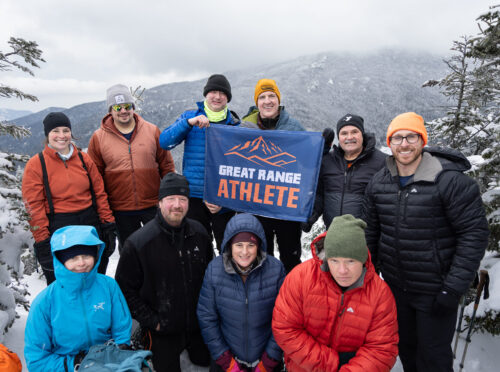
The Great Range Athlete “Colden Team” hiking Mount Colvin, one of Appleton’s group fitness training and coaching programs
In addition to his work in film, podcasting, and writing, Appleton has his own business as a fitness coach, Seek To Do More, where he teaches clients how to get in better shape to embark on their own outdoor adventures. Today, Appleton coaches people all over the country to help them realize their full potential — mirroring those new paths he once paved in his own life.
The Adirondack 46 in 18 Hikes: The Complete Guide to Hiking the High Peaks is out now and can be purchased on Amazon.
Episodes of The 46 of 46 Podcast are available on Apple Podcasts, Spotify, and iHeartRadio. For even more, check out the podcast on YouTube, Instagram, and its official website.
Find James Appleton on Instagram, Facebook, and at Seek To Do More Coaching.
Photos courtesy of James Appleton
—
 About the Author: Keegan Williams is a freelance editor and writer based in Los Angeles. They have written for publications including HuffPost, LGBTQ Nation, and High Times. Keegan has a passion for fitness, and they are heavily immersed in LA’s underground dance scene with a love for techno and other high-energy electronic music genres.
About the Author: Keegan Williams is a freelance editor and writer based in Los Angeles. They have written for publications including HuffPost, LGBTQ Nation, and High Times. Keegan has a passion for fitness, and they are heavily immersed in LA’s underground dance scene with a love for techno and other high-energy electronic music genres.
You can find them at keeganmwilliams.com or on Instagram @promwitch.
The post Interview: James Appleton, Author of ‘The Adirondack 46 in 18 Hikes’ appeared first on Road Trips For Families.
A Family-Friendly Guide to the Camino de Santiago 1 Apr 10:13 AM (8 days ago)
Walking the Camino de Santiago is an unforgettable experience. This ancient pilgrimage route through Spain and Portugal is more than just a hike — it’s a journey filled with history, adventure, and personal growth. Many people think the Camino is only for adults, but families can also enjoy it! With the right route and preparation, kids can have a great experience, making memories that will last a lifetime.
If you dream of walking the Camino de Santiago with your family, here’s everything you need to know to make it fun, safe, and exciting for everyone.
Camino de Santiago: The Best Family-Friendly Routes
Not all Camino routes are the same. Some are long and challenging, while others are shorter and easier. If you’re traveling with kids, here are two great options:
The Last 100 km of the Camino Francés
- Starts in Sarria and ends in Santiago de Compostela
- Takes about five to seven days to walk
- Mostly flat paths with plenty of small towns to rest
This is the most popular section of the Camino. It’s just the right length for families, and kids will love collecting stamps in their Credencial del Peregrino (Pilgrim’s Passport).
The Camino Portugués (Coastal Route)
- Starts in Baiona, Spain, and ends in Santiago
- Takes around seven days
- Offers beautiful ocean views and fresh sea air
This route is peaceful, with lots of places to stop, enjoy the scenery, and rest. If your kids love nature, they’ll enjoy walking by the coast and spotting birds, boats, and seashells along the way.
Camino de Santiago: Essential Tips for Parents
A little planning goes a long way when walking the Camino with kids. Here are some tips to keep everyone happy and comfortable:
Choose Family-Friendly Accommodation
Look for albergues (pilgrim hostels) or small hotels that have private rooms. Some places even offer family-friendly meals and play areas for children.
Walk at a Child’s Pace
Kids get tired faster than adults. Plan for shorter walking days (10 to 15 km, or about 6 to 9 miles, per day) and take lots of breaks for snacks, rest, and fun.
Pack Smart
Keep things light, but don’t forget:
- Comfortable shoes – Kids will be walking a lot!
- Snacks and water – Keep energy levels up.
- Rain jackets – The weather can change quickly.
- A small backpack – Let kids carry their little bag with a toy or notebook.
Keeping Kids Engaged
Walking all day can be tiring for little ones, so make the journey exciting!
Stamp Collecting
Every pilgrim gets a credencial (passport) where they collect stamps from churches, cafes, and hostels along the way. Kids love this activity, and it helps them feel like real adventurers!
Nature Exploration
Encourage kids to look for different birds, flowers, and shells along the path. Bring a small notebook so they can draw or write about what they see.
Local Legends & Stories
The Camino is full of old legends about saints, miracles, and even dragons! Read some fun stories before bedtime or ask locals to share tales from their villages.
Making Memories Together
Walking the Camino de Santiago as a family is a special experience. It teaches kids about perseverance, adventure, and culture. With the right route, a relaxed pace, and fun activities, your family can enjoy every step of the journey.
So, pack your bags, put on your walking shoes, and get ready for an adventure you’ll never forget!
The post A Family-Friendly Guide to the Camino de Santiago appeared first on Road Trips For Families.

